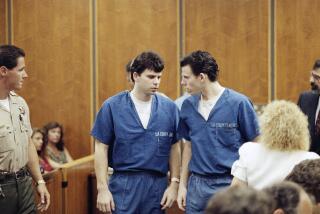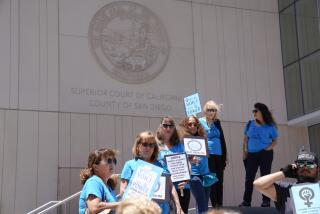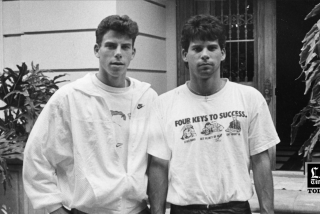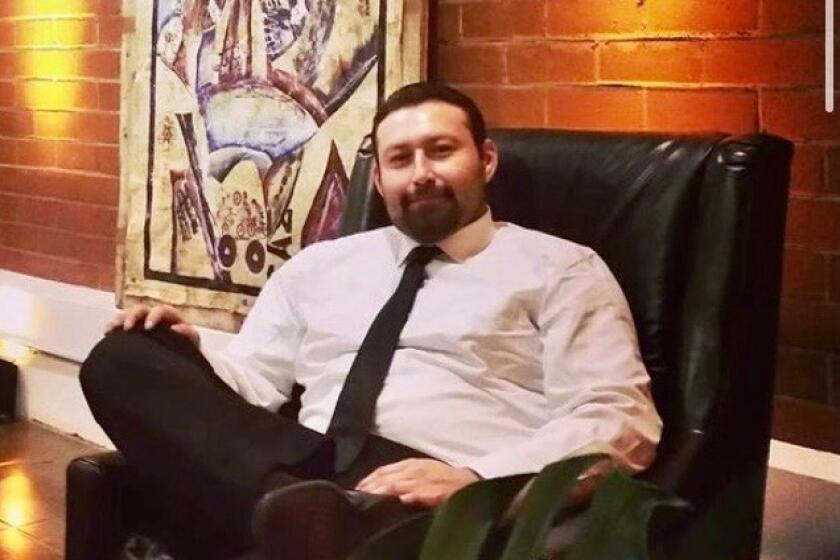Molesters’ fates a matter for experts
I haven’t written much over the years about Sidney Landau. Good move on my part. You don’t get rich around here defending -- as I did in 1997-- the rights of convicted child molesters to return to society after their release.
Landau, 68, is back in the news, but this time around there’s no need to weigh in on taking him back. That’s because he’s still in a state mental hospital and has lost his latest bid to be released.
But that failed attempt raises another interesting angle to the pedophile issue: How is a layman supposed to know when the offender is ready to be released?
I don’t know how I’d know. Nor would I want jury duty on that day.
Landau has been convicted twice of molesting young boys, one 10 years old, the other 8.
The latest conviction was in 1988, for which he served eight years before being paroled in 1996. He was jailed on a parole violation in 1997 for striking a TV photographer and again in 1998 for having family photos of himself with his grandnephews. A condition of his parole was to stay away from children. Before his scheduled release in 2000, prosecutors petitioned to keep him in custody.
Landau has admitted to molesting eight other boys before his arrest 20 years ago.
Should a molester serve, in effect, a life sentence for a crime that doesn’t carry that punishment? Doesn’t sound fair.
Should a molester be returned to a neighborhood where he may well inflict his particularly heinous crime upon other children?
I don’t want to be the juror who gets that one wrong.
In short, I’m a hung jury all by myself.
But two Orange County juries have been asked to decide. Neither could do it. Two juries, two mistrials because they couldn’t reach a unanimous verdict.
Here’s the kicker: The first jury in 2006 voted 11 to 1 to release Landau. The second jury, earlier this month, voted 8 to 4 not to release him.
Same guy, same set of facts. Wildly divergent jury votes. The Orange County district attorney’s office convinced Superior Court Judge Richard King that Landau be tried a third time.
This starts sounding less like justice and more like buying a lottery ticket. Both for Landau and for whatever neighbors he might someday be living among.
Is there a better way to do this?
I asked that Friday of Martha Rogers, a forensic psychologist with a private practice and a member of the panel of experts used by Orange County courts. She is not involved in the Landau case.
“My own feeling,” Rogers says, “is that most lay people don’t really have a grasp of, how shall we say, the life pattern of these people. There is some research that has tracked the offenders for 20 or 30 years, and there is a pretty decent chance they will re-offend.
“Twenty years, unfortunately, doesn’t really prove anything” as to whether they’ll re-offend.
Nor does being 68 years old mean that a former offender is less likely to do so again, Rogers says. That is particularly true in cases where the victims were young boys, she says. That category of molester is the most likely to be a repeat offender, she says.
Rogers emphasizes she’s not venturing an opinion on Landau, but she worries about his admitted history of multiple molestations.
“I’m speaking as clinically as I can,” she says. “This is about [molesters] as groups. Unfortunately, we’re asked to make decisions and juries are asked to make decisions about an individual. In reality, our predictability for an individual is not that hot.”
That only reinforces my qualms about lay people deciding such things.
The key to a successful release, Rogers says, lies in the terms of a molester’s parole. “Do they meaningfully protect the individual -- is he going to be able to have a life -- and does it protect the community, too? I feel real sorry for those guys who are running around trying to find a place to live and where they’re not run out of town on a rail.”
The better way, madam?
“I would rather see judges who are trained in this area, who have some sophistication about the area and who see lots of cases,” she says.
“A juror comes in, it’s a novel experience for him, he has no background, he may have done some reading on the subject, who knows what he’s read. . . . “
Conversely, she says, a judge who sees “20 or 30 or more [cases] a month and has some training and background” would seem to be a better choice to decide who’s returned to society and who’s not. “It’s always a crapshoot,” Rogers says, “but I personally feel like the jury system for this kind of decision increases the uncertainty of the outcome.”
Landau’s two trials prove that: 11 to 1 for release and 8 to 4 for keeping him in the hospital. We lay people don’t know how to decide these things.
I’m not sure judges do, either.
Dana Parsons’ column appears Tuesdays, Thursdays and Saturdays. He can be reached at (714) 966-7821 or at dana.parsons@latimes.com. An archive of his recent columns is at www.latimes.com/parsons.
More to Read
Sign up for Essential California
The most important California stories and recommendations in your inbox every morning.
You may occasionally receive promotional content from the Los Angeles Times.










